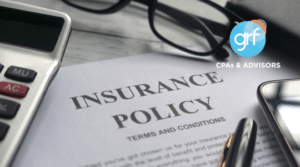July 19, 2023
How much money is your business spending on insurance products? Insurance is often a major business expense, and it can be a lifesaver when the unexpected happens. However, higher spending doesn’t necessarily equate to better coverage. Rather than focusing on just the price, it’s important to match insurance products and coverage levels with your business’s risk management strategy.
Here are eight tips for keeping business insurance costs low — without compromising on coverage.
1. Be Proactive about Risk Reduction
When Ben Franklin founded the first U.S. volunteer fire company in 1736, he famously said “an ounce of prevention is worth a pound of cure.” This concept holds true today when it comes to reducing business risks.
By taking proactive steps, businesses can minimize their exposure to risk and, in turn, reduce their need for insurance coverage and uncontrollable rate hikes. Actions might include implementing a safety training program or undertaking a risk management review to decrease the chance you’ll have to make a claim. Your business could also upgrade its security and sprinkler systems to minimize risks. Likewise, if your company handles sensitive customer data, you should implement security protocols to decrease your risk of cybercrime (see our Bonus Tip in this article about cyber insurance).
Insurance providers are the experts when it comes to evaluating risk. Your agent or broker can help identify problem areas and ways you can improve them.
2. Categorize Staff Appropriately
Workers’ compensation claims can be costly, and different industries have varying risks of worker injury. If employees are placed into higher-risk categories than they should be, their employers might be paying unnecessarily high premiums.
That isn’t to say you should downplay potential employee safety risks. Misrepresenting your situation to an agent or a broker could result in denied claims, policy cancellations, and insurance fraud charges.
If employees leave the company or you hire new employees, inform your insurance company as soon as possible. This can also affect your premiums.
3. Review before You Renew
While owners and managers focus on day-to-day business operations, they might be tempted to simply pay their annual renewals without first reviewing their policies. Before you renew, evaluate how your business’s operations have changed over the last year. Then consider how those changes affect internal and external risks. Discuss the changes in your business’s risk profile with your agent or broker, along with any rate changes. You may need to revise your coverage to match your business’s current risks.
4. Bundle Insurance Products
Just like buying office supplies in bulk, you can sometimes get a discount when you buy more than one insurance product from the same insurer. Large companies have more extensive coverage needs, so they typically purchase multiple policies that can be bundled. But small business owners may have only one comprehensive business policy. In this situation, the owner might lower costs by bringing their business and personal coverage under the same insurance umbrella.
When bundling insurance products, watch out for redundancies — you don’t want to pay twice for the same coverage. Review the policies carefully. If your business needs specialty coverage, you might need to add a rider to your policy.
5. Pay Upfront
When you pay insurance bills monthly, you’re probably paying extra fees or higher premiums than if you paid it for the full year upfront. Before you make one lump sum payment, be sure that you have enough cash on hand for your other operating needs. You don’t want to encumber your cash flow and end up with cash shortages in the coming months. If that’s the case, it might be better to break the total into payments for this year, and set a goal to save up for next year’s payment.
6. Change Your Deductible
The higher the deductible, the lower the premium (and vice versa). In general, larger companies can handle deductibles in the thousands of dollars, while smaller firms may have tighter margins and prefer lower deductibles to preserve cash flow. But an owner’s aversion to risk may also factor into the decision. Carefully evaluate your needs and determine just how big a deductible your company — and your conscience — can afford.
7. Ask for Discounts
There’s no harm in calling your agent or broker to ask for a discount — or even shopping around with other providers for better deals. Industry trade associations can assist in finding ways to cut the costs of insurance. Also, there may be insurance carriers that specialize in your industry and have policies tailored to your needs at better prices. Research industry publications for ways to save.
8. Evaluate the Scope of Coverage
There’s no one-size-fits-all insurance solution — even within the same industry. You may have to do some work to find coverage that’s appropriate for your company. Too much coverage means you’re paying for something you’ll never use. Too little coverage can leave you dangerously exposed. Your financial advisors can work with your insurance agent or broker to determine the values of insured assets and the amount of insurance proceeds needed to mitigate potential risks.
Reputation Matters
Cost shouldn’t be the only consideration when evaluating your business’s insurance coverage. Other factors, such as the claims process or the insurance carrier’s rating and reputation, may factor into your decision, too. Treat insurance like an investment. That is, do your research and discuss your options with a trusted financial advisor, or contact us at GRF for assistance.
© 2023
 Bonus Tip – Don’t Forget About Cybersecurity!
Bonus Tip – Don’t Forget About Cybersecurity!